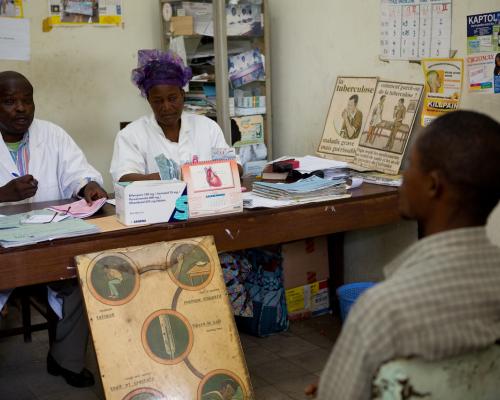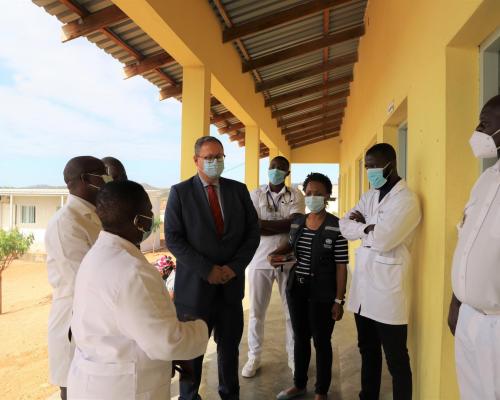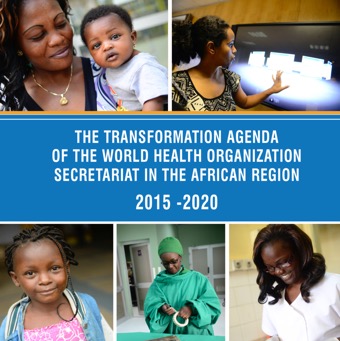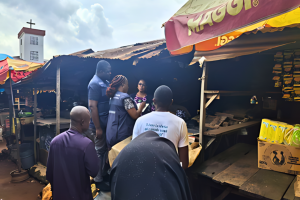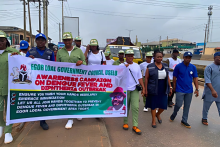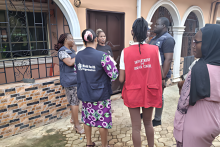Outbreak in Uselu: How Swift Action Saved Lives from Dengue’s Silent Threat
Benin City, – A deadly fever gripped Uselu’s markets in June 2025, revealing dengue fever’s threat. By July 10, 192 suspected cases, 93 confirmed, and one tragic death among the suspected cases spurred a swift response from the Nigeria Centre for Disease Control (NCDC), and the Edo State Ministry of Health, supported by the World Health Organization (WHO)
A Silent Threat Emerges
In mid-June, Irrua Specialist Teaching Hospital (ISTH) in Uselu, Egor Local Government Area, confirmed six PCR-positive dengue cases, followed by a seventh. By July, 52 suspected cases emerged, mostly among young adults aged 20–29, with women comprising 60% of cases. One life was lost. Dengue fever, spread by Aedes mosquitoes, causes high fever, severe headaches, intense muscle and joint pain, and pain behind the eyes. In severe cases, it can lead to internal bleeding and death. Globally, dengue cases have surged thirtyfold over 50 years, threatening nearly 4 billion people across 100 countries. In Edo, misdiagnosis as malaria, due to similar symptoms, delayed care, allowing the virus to spread unchecked and amplifying the outbreak’s toll.
A female health worker in Benin City shared her ordeal: “I came down with a persistent fever in early June that lasted eight days, despite antipyretics. The throbbing headache, intense joint pain, and sharp pain behind my eyes were unbearable. I went to my health facility, where the team quickly tested for multiple diseases. The dengue test came back positive. I am grateful for their swift action, which led to my healing.”
As dengue spread, Uselu’s environment fuelled the crisis.
Uselu’s Environmental Challenges
Uselu, a bustling trading hub in Benin City, became an epicentre for dengue transmission. Clogged gutters, open containers, and poor waste management created a breeding ground for Aedes mosquitoes. Heavy rainfall intensified the conditions, exacerbating the public health risk.
Coordinated Emergency Response
NCDC, WHO, ISTH, the Institute of Human Virology of Nigeria (IHVN), and the University of Benin Teaching Hospital (UBTH) launched a rapid response: field investigations, verbal autopsies, streamlined testing, infection control, radio campaigns, and clinician training. When rumours of deaths reached Aigbe Alero, Egor LGA’s Disease Surveillance Officer, they acted fast, alerting WHO and the State Ministry of Health. “Their quick support was crucial,” Alero said, as joint investigations with the market chairman and health facilities confirmed dengue cases.
“The response from NCDC, WHO, and our partners has been a lifeline,” said Dr Stephenson B. Ojeifo, Director of Public Health, Edo State Ministry of Health. “We’re building trust and ensuring timely care.”
Dr. Nora Eyo, WHO’s State Coordinator for Edo, added, “Activating the Emergency Operations Centre for dengue is sharpening detection and saving lives.”
This united effort steadied Uselu’s shaken community.
Voices from the Market: Stories of Impact
Uselu Market’s vibrancy faded in June as illness struck. Trader Terry Osunobu saw colleagues fall ill, some never returning. In response, the Edo State Government, in collaboration with WHO and local health authorities, swiftly mobilised resources and personnel to investigate the outbreak.
Their efforts confirmed dengue fever as the cause.
Terry’s daughter, who was hospitalised for a week, made a full recovery thanks to the coordinated health response. “I am deeply grateful to the Edo State Government, my local government officials and WHO,” he shared. “Their prompt action gave us answers, and with answers comes healing.”
By July 10, Uselu’s families faced a grim toll: 192 fell ill, 93 had confirmed dengue, and one life was lost among the suspected cases. Egor LGA saw 45 cases, mostly young women aged 20–29, with 41 tests pending and a 17% positivity rate.
By July 10, the breakdown of cases by local government areas painted a clearer picture:
Table 1: Dengue Fever Suspected and Confirmed Cases by LGAs
| Local Government Area | Suspected Cases | Confirmed Cases |
| Egor | 45 | 27 |
| Esan Central | 1 | 0 |
| Esan West | 2 | 1 |
| Ikpoba-Okha | 22 | 5 |
| Oredo | 44 | 20 |
| Ovia Northeast | 44 | 20 |
| Owan East | 1 | 0 |
| Uhunmwonde | 3 | 3 |
| Unidentified (UBTH) | 51 | 23 |
| Grand Total | 192 | 93 |
The highest confirmed cases came from Egor (27), UBTH (23), and Oredo (20), reinforcing the urgency in these hotspots.
Lessons to Save Lives
Early diagnosis and supportive care are critical for dengue, which lacks a specific antiviral treatment. WHO’s rumour surveillance and community engagement identified cases and dispelled myths. Persistent fevers need broader testing to avoid misdiagnosis. Verbal autopsies clarified the outbreak’s scope.
Key Takeaways from Edo’s Dengue Response
• 60% of cases were among women aged 20–29
• One fatality recorded among suspected cases
• Egor, Oredo, and UBTH saw the highest confirmed cases
• Rapid, coordinated response by NCDC, WHO, and local authorities saved lives
• Environmental conditions in Uselu exacerbated mosquito breeding
